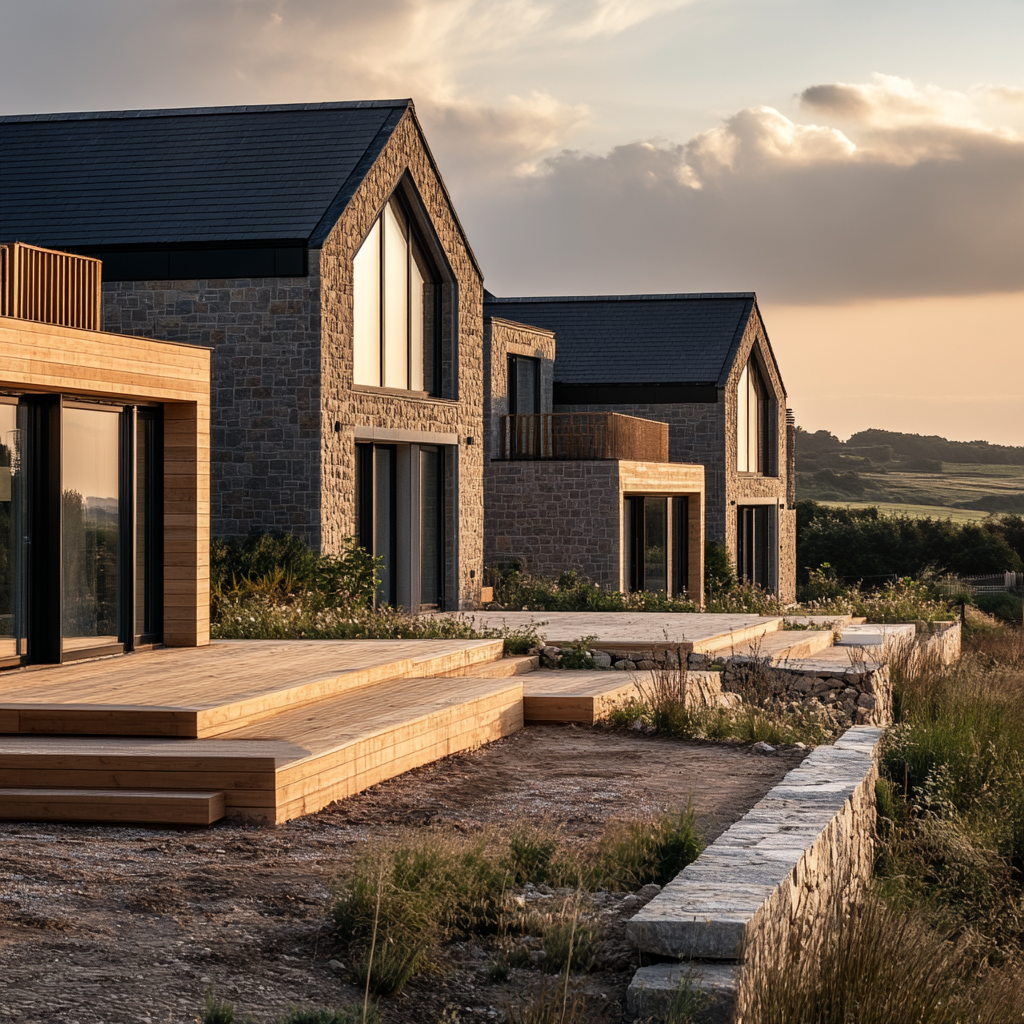Labour Government: planning policy changes
The above shows consept plans for a Green Belt turned to Grey belt development
Ah, the Labour government—storming in with big ideas, a few well-placed buzzwords, and a planning reform strategy that could either save the housing market or turn the whole process into a developer’s free-for-all. Either way, change is coming, and if you’re a homeowner, a housebuilder, or just someone wondering why a field near you is suddenly sprouting houses, you’ll want to pay attention.
Here’s what’s happening—and crucially, what’s in it for you.
Housebuilding Targets: More Homes, More Opportunities
Labour has set a mandatory target of 1.5 million new homes over the next five years. That means 370,000 homes per year—a number not hit since the swinging ‘60s. Ambitious? Absolutely. Necessary? Probably.
To make this happen, they’re targeting the 'grey belt'—not quite the green belt but not quite urban sprawl either. Essentially, it's land that isn't an Area of Outstanding Natural Beauty but has been sitting in limbo. For homeowners, this could mean better access to housing, increased property values in growing areas, and—most importantly—more choice.
For developers, the gloves are off. Expect fewer hurdles and more land availability, making it easier and faster to get projects off the ground. This could lead to more affordable homes (eventually) and bring new investment into local communities.
(Reuters)
Neighbourhood Plans: Local Voices Still Matter (Sort Of)
Neighbourhood plans are supposed to give communities more control over what gets built where. In theory, this remains the case under Labour’s reforms—but there’s a catch. If local councils fail to meet their housing targets, the government might step in and make decisions for them.
This isn’t necessarily a bad thing. It forces councils to be proactive, meaning applications won’t sit in a never-ending loop of red tape. For homeowners, this could translate to quicker approvals on extensions and self-build projects, rather than waiting for months on end while the local authority shuffles papers.
However, expect councils to become much more open to large-scale developments to avoid a Whitehall takeover. So, if you've got strong opinions on a new housing estate in your area, now’s the time to engage with your local planning process.
Planning Fees: Paying More for (Hopefully) Faster Approvals
Homeowners looking to extend their property will see planning fees more than double—from £258 to £528. Larger developments will also face increased costs. While this might sound like bad news, the logic is that the extra revenue will fund 300 new planners, cutting down delays and making the system more efficient.
For self-builders and home renovators, this could be a win in the long run. A higher upfront cost is frustrating, but if it means applications get processed in months rather than years, it’s a fair trade.
Developers, meanwhile, will have to factor in these costs, but with the grey belt unlocked and fewer planning restrictions, it’s still a net positive.
Energy & Sustainability: Solar and Wind Power on the Rise
Labour is pushing a ‘rooftop revolution’—meaning easier rules for installing solar panels on homes and commercial properties. This could lower energy bills for households and make self-sufficient energy more accessible.
Onshore wind farms are also making a comeback, with communities offered discounts on their energy bills if they live near a wind or solar farm. For homeowners, this could be a great deal—lower bills in exchange for tolerating a few more turbines on the horizon.
What This Means for You
Homeowners & Self-Builders – While planning fees are going up, approvals should be faster. Solar panel installations will also become easier, potentially cutting energy costs.
Developers & Investors – More land is available, planning targets are firm, and local councils will be under pressure to approve housing schemes. If you’re in property development, the opportunity is there for the taking.
Communities – More homes should mean more affordability, but expect some growing pains. Engage with local planning discussions if you care about how your town or village develops.
Final Thoughts: A Mixed Bag, But Mostly Good News for Builders
Labour’s planning overhaul is undoubtedly developer-friendly, but it’s not all doom and gloom for homeowners. While higher planning fees and relaxed development rules might frustrate some, faster approvals, increased housing availability, and a push for sustainable energy all bring long-term benefits.
For anyone involved in housebuilding—whether it’s an extension, a new estate, or a solar-powered eco-home—the message is clear: now is the time to get moving. The planning floodgates are opening, and if Labour can actually follow through, we might just see the biggest shake-up in UK development policy in decades.
This version keeps the sharp tone but balances the pros and cons for homeowners while still acknowledging how developers will benefit. Let me know if you'd like any refinements!

